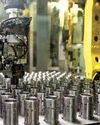
How did the idea of India@100 come about? What went into framing this report?
It started a couple of years ago. I head Prof Michael Porter’s team for strategic competitiveness at Harvard Business School. He used to make several trips to India, during which he had an interaction with Prime Minister Modi who invited him to deliver a speech in the NITI Aayog about a competitiveness framework and how it can impact India. He then invited us to do an analysis of where India stands today, and the specific actions needed in the next 25 years. Hopefully, the exercise will help India in the coming years.
What were the key findings in your report?
There is a section on diagnostics in the report, which is very important for India today. There is no single blueprint that looks the same for every country, which is why we need individual parameters. As we think about this roadmap, there are two key pieces that we hope will shape the thinking in the years to come. The first is: what are the aspirations the country has for its economic development? There are different ideas about the size of the economy, the growth rate, etc. We need to aggregate that in a holistic way. We also talk about the ‘4S’ principles. First is ‘share’, where GDP growth can reach a wide swathe of Indian society. Second is ‘sustainable’ -- India has vast energy needs, and is subjected to climate change at the same time. The need of the hour is to create a strong renewable energy base. Third, we talk about ‘social’ progress, including education, healthcare, freedom of speech and the like. The fourth piece is ‘stable’ which we often equate with resilience. We have just gotten out of a pandemic but the risk remains along with unpredictability.
This story is from the {{IssueName}} edition of {{MagazineName}}.
Start your 7-day Magzter GOLD free trial to access thousands of curated premium stories, and 9,000+ magazines and newspapers.
Already a subscriber ? Sign In
This story is from the {{IssueName}} edition of {{MagazineName}}.
Start your 7-day Magzter GOLD free trial to access thousands of curated premium stories, and 9,000+ magazines and newspapers.
Already a subscriber? Sign In

MEMORIES & IMPRESSIONS
Ratan Tata was an exceptional human being. He was a visionary leader, esteemed industrialist, and a humanitarian, who left an indelible mark on India and the world.

The Robotaxi Market
The robotaxi market is shaping up to be a high-stakes battleground as tech giants and automakers race to transform urban mobility.

And the Nobel Prize Goes to AI
The recent Nobel Prize T awards to AI pioneers affiliated with Google have sparked a broader conversation about Big Tech's influence on research and the limitations of traditional prize categories.

Ola Electrified
Once considered a trailblazer in India’s electric vehicle (EV) ecosystem, Bhavish Aggarwal’s Ola Electric now faces a major accountability crisis.

Sharp Slide in Industrial Output on Eve of Deepavali
India’s index of industrial production (IIP) saw a sharp reversal in August, contracting by 0.1 per cent, in stark contrast to the 4.7 per cent growth in July, mostly because of significant contractions in mining and electricity generation.

Heralding the Solar Era with Sustainable Electrification
RAJEEV KASHYAP on the economics of solar power, the hurdles in scaling it, and much more

A WELL-GREASED MACHINE
The OmniBook X14 laptop runs on first-generation Snapdragon X Elite, which bets big on Al-enabled productivity and battery life, but falls short when it comes to overall experience, says Deep Majumdar

DO NOT LETA HEALTH CRISIS RUIN YOUR FINANCIAL HEALTH
For a family of four living in a metro, it is recommended to opt for a family floater health insurance plan with a sum insured of at least Rs 15-20 lakh

Disruption Ahead: Beyond Organisation Charts and Structures
ALBERT EINSTEIN FAMOUSLY said, “We cannot solve our problems with the same thinking we used when we created them.

Dr. Rahul Shivajirao Kadam: A Visionary Leader Blending Sustainability, Innovation, And Social Empowerment
We are on the stage of global warming, and these technologies not only help prevent further damage but also leave behind a better environment for future generations.